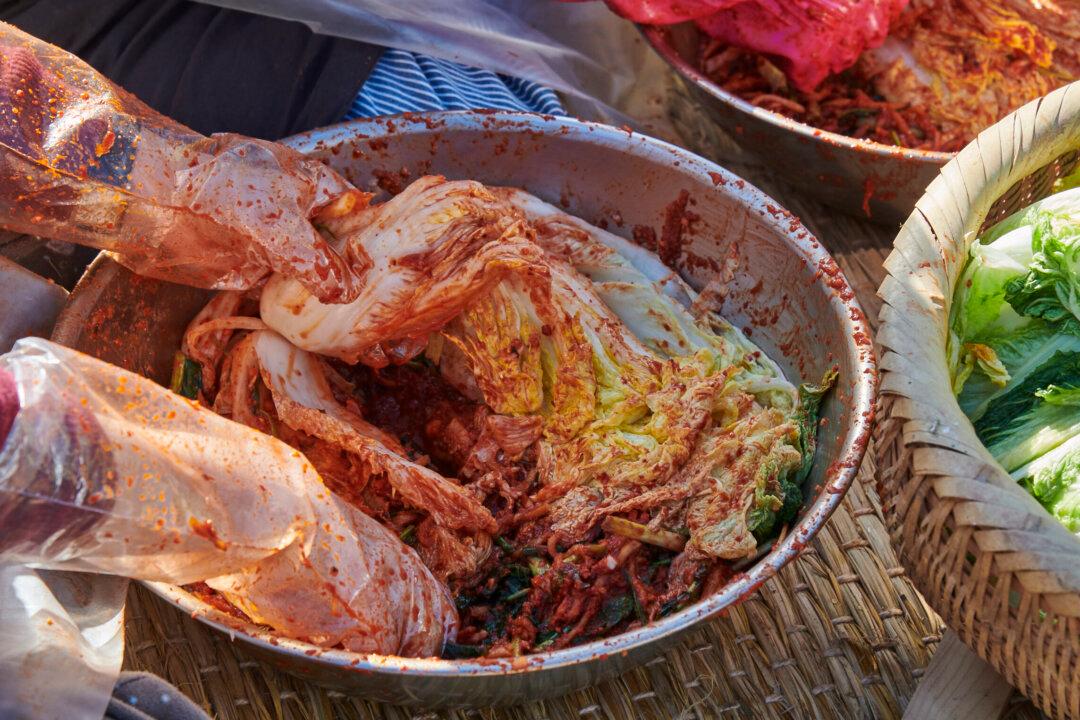Iksan, South Korea—I’m under an azure sky, crouched on my knees on a scratchy handmade straw mat laid over the morning’s frost. It is painfully cold, about 23 degrees, and I am grateful for the sun shining strongly on my back, warming me like a lizard basking on a rock.
I gaze up at the mountains surrounding the valley and the fluffy clouds hugging them; they have a cozy quality about them, happily cuddling the autumn-leaved mountain tops. I take a deep breath. The smell hits me at once. That undeniably funky, in-your-face stench of spicy, garlicky, fermented cabbage—the smell of kimchi. I love it.





